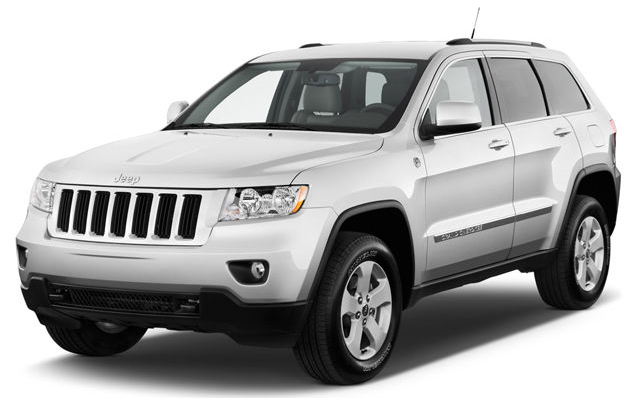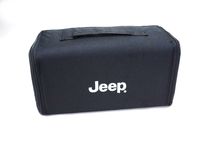Jeep Cherokee 2013: A Deep Dive into the Last of the Traditional Breed
Jeep Cherokee 2013: A Deep Dive into the Last of the Traditional Breed jeeps.truckstrend.com
The year 2013 marked a pivotal moment in the storied history of the Jeep Cherokee. While many immediately think of the radically redesigned, more car-like model that debuted for 2014, the 2013 model year represented the final iteration of the fourth-generation (KK) platform. In North America, this vehicle was known as the Jeep Liberty, while in many international markets, it proudly carried the "Cherokee" badge. This article will focus on the 2013 Jeep Cherokee/Liberty (KK generation), exploring its design, performance, features, and its enduring appeal as a rugged, capable, and practical SUV that offered a blend of daily usability and genuine off-road prowess before the brand embarked on a new design direction.
Understanding the 2013 Jeep Cherokee (KK Generation)
Jeep Cherokee 2013: A Deep Dive into the Last of the Traditional Breed
To truly appreciate the 2013 Jeep Cherokee, it’s essential to understand its context. This model was the culmination of the fourth generation (KK), which had been in production since 2008. It succeeded the popular third-generation (KJ) Cherokee/Liberty and retained much of its predecessor’s rugged, upright styling and off-road philosophy. Unlike its 2014 successor, which moved to a car-based unibody platform derived from Alfa Romeo, the 2013 Cherokee/Liberty was built on a more traditional unibody construction with significant structural reinforcement, providing a more robust foundation for tackling rough terrain.
Its position in the market was clear: a compact to mid-size SUV that appealed to those who valued genuine capability over crossover-style refinement. It was a vehicle for adventurers, families who needed utility, and anyone who appreciated Jeep’s heritage of go-anywhere ability.
Design and Aesthetics: Form Meets Function
The 2013 Jeep Cherokee’s design was a clear homage to its lineage, yet with a modern touch for its time.
Exterior
The exterior styling was undeniably Jeep:
- Boxy and Upright Stance: Unlike the sleek, rounded crossovers that were gaining popularity, the 2013 Cherokee maintained a traditional SUV silhouette. This design choice contributed to excellent visibility and a spacious interior.
- Signature Jeep Grille: The iconic seven-slot grille, flanked by large, circular headlights, gave it an unmistakable Jeep identity.
- Rugged Proportions: Short overhangs, a relatively high ground clearance, and available skid plates hinted at its off-road intentions. The overall look was one of durability and readiness for adventure.

Interior
Inside, the 2013 Cherokee prioritized functionality and durability over luxury:
- Practical Layout: The dashboard was logically laid out, with easy-to-reach controls and large, straightforward gauges.
- Durable Materials: Hard plastics were prevalent, but they were chosen for their robustness and ease of cleaning, suitable for a vehicle likely to see dirt and grime.
- Comfort and Space: While not plush, the seats offered decent comfort for long drives. Front and rear passenger space was adequate for its class, and the tall roofline provided ample headroom.
- Cargo Versatility: The rear cargo area offered a respectable amount of space, which could be expanded significantly by folding down the rear seats. The flat load floor made it easy to slide in larger items.

Powertrain and Performance: Unpacking the V6 Heart
The heart of the 2013 Jeep Cherokee (KK) was its singular, reliable engine option.
- Engine: All 2013 models were powered by a 3.7-liter SOHC V6 engine. This powerplant delivered 210 horsepower and 235 lb-ft of torque. While not a powerhouse by modern standards, it provided sufficient grunt for daily driving and enough low-end torque for off-road maneuvers.
- Transmission: A 4-speed automatic transmission was standard across all trims. This was perhaps the vehicle’s most notable technological limitation, as many competitors had moved to 5-speed, 6-speed, or even CVT transmissions by this time. While robust, the 4-speed could feel dated, sometimes hunting for gears on inclines or during aggressive acceleration.
- Drivetrain Options:
- 2WD (Rear-Wheel Drive): Standard for improved fuel economy and on-road performance.
- Command-Trac II 4WD: A part-time 4WD system suitable for off-road use, with 2WD, 4WD High, and 4WD Low settings. Not intended for use on dry pavement in 4WD modes.
- Selec-Trac II 4WD: A full-time, active 4WD system that could be used on all surfaces, including dry pavement. It featured a 4WD Auto mode that automatically engaged 4WD as needed, along with 4WD High and 4WD Low. This was the more sophisticated option for those who frequently encountered varied conditions.
- Towing Capacity: With the proper equipment, the 2013 Cherokee could tow up to 5,000 pounds, making it a capable choice for hauling small boats, campers, or trailers.
Trim Levels and Key Features
For its final model year, the 2013 Jeep Cherokee (Liberty) was offered in three primary trim levels, each building upon the previous one:
- Sport: The base model, offering essential features like power windows and locks, air conditioning, a CD player with MP3 capability, and 16-inch steel wheels. Command-Trac II 4WD was optional.
- Latitude: Stepping up, the Latitude added amenities such as 17-inch aluminum wheels, body-color exterior trim, roof rails, steering-wheel-mounted audio controls, cruise control, and an upgraded interior with cloth/vinyl seating. Selec-Trac II 4WD was often an option here.
- Limited: The top-tier trim, boasting chrome exterior accents, larger 18-inch wheels, leather-trimmed seats, heated front seats, power-adjustable driver’s seat, Uconnect multimedia system with a touchscreen, navigation, and a premium audio system. Selec-Trac II 4WD was typically standard or a primary option.
Other notable available features across the range included a sunroof, trailer tow group, skid plate group, and various convenience packages.
On-Road Comfort vs. Off-Road Prowess
The 2013 Jeep Cherokee’s driving experience was a reflection of its design philosophy: a capable off-roader that could also handle daily driving.
On-Road Driving Dynamics
- Ride Quality: The ride was on the firmer side, characteristic of an SUV designed for rugged terrain. It absorbed bumps reasonably well but wasn’t as refined or car-like as its crossover rivals.
- Steering: The steering was hydraulic, offering decent feedback but feeling a bit heavy at low speeds.
- Visibility: The boxy shape and large windows provided excellent outward visibility, a boon in traffic and off-road.
- Maneuverability: Its relatively compact size (for an SUV) made it surprisingly easy to maneuver in urban environments.
Off-Road Capability
This is where the 2013 Cherokee truly shined and differentiated itself:
- Ground Clearance: Good ground clearance (around 8 inches) helped clear obstacles.
- Approach/Departure Angles: Decent angles allowed it to tackle steep inclines and declines without scraping.
- Robust Suspension: Independent front suspension and a five-link rear solid axle provided a good balance of on-road comfort and off-road articulation.
- Low-Range Gearing: Both 4WD systems offered a low-range transfer case, crucial for crawling over rocks, ascending steep hills, or navigating deep mud.
- Skid Plates: Available skid plates protected vital underbody components, a must for serious off-roading.
- True 4×4: Unlike many "soft-roaders" of its era, the 2013 Cherokee was a true 4×4, capable of tackling challenging trails that would leave most crossovers stranded.
Reliability and Common Concerns for the KK
The 2013 Jeep Cherokee (KK) generally has a reputation for being a robust vehicle, but like any used car, it has its common quirks and potential issues to be aware of.
- Transmission (4-Speed Automatic): While generally durable, the 4-speed automatic can experience issues, particularly if not properly maintained. Look for hard shifts, slipping, or delayed engagement. Regular fluid and filter changes are key.
- Electrical Gremlins: Minor electrical issues, such as power window failures, sensor malfunctions, or dashboard warning lights, are not uncommon.
- Rust: Depending on the climate it’s lived in, the frame, suspension components, and exhaust system can be susceptible to rust, especially in areas where salt is used on roads.
- Suspension Components: Worn ball joints, control arm bushings, and tie rod ends can lead to clunking noises, uneven tire wear, and loose steering.
- Oil Leaks: The 3.7L V6 is generally reliable, but some owners report minor oil leaks from valve covers or the oil pan gasket as the vehicle ages.
Maintenance Tips: Regular oil changes, transmission fluid service, checking fluid levels, and addressing any suspension noises promptly can significantly extend the life and reliability of a 2013 Cherokee.
Fuel Economy: A Realistic Look
Given its V6 engine and older 4-speed automatic transmission, the 2013 Jeep Cherokee’s fuel economy figures are modest by today’s standards.
- EPA Estimates (approx.):
- 2WD: 16 MPG city / 22 MPG highway
- 4WD: 15 MPG city / 21 MPG highway
Real-world mileage can vary based on driving style, terrain, and maintenance. Compared to modern compact crossovers that often achieve 25-30+ MPG combined, the 2013 Cherokee is less efficient, a trade-off for its rugged capability.
Safety Features and Ratings
The 2013 Jeep Cherokee included a standard suite of safety features for its time:
- Multiple Airbags: Front, side-curtain, and front-seat-mounted side airbags.
- Anti-lock Brake System (ABS).
- Electronic Stability Program (ESP) with Electronic Roll Mitigation.
- Traction Control.
- Tire Pressure Monitoring System.
In terms of crash test ratings, the 2013 Liberty/Cherokee received decent scores for its class and era, though not always top-tier compared to the latest vehicles. It earned a "Good" rating in the IIHS moderate overlap front test and "Acceptable" for roof strength.
The Used Market: What to Look For When Buying a 2013 Jeep Cherokee
Purchasing a used 2013 Jeep Cherokee can be a smart move for those seeking a capable and affordable SUV. However, a thorough inspection is paramount:
- Pre-Purchase Inspection (PPI): Have a trusted mechanic (ideally one familiar with Jeeps) perform a comprehensive inspection. This can uncover hidden issues.
- Rust Check: Pay close attention to the frame, rocker panels, suspension components, and exhaust system for signs of significant rust, especially in snow-belt regions.
- Fluid Leaks: Check for any signs of oil, coolant, or transmission fluid leaks under the vehicle or in the engine bay.
- Transmission Performance: During a test drive, note how the transmission shifts. Look for smooth, timely shifts without hesitation or clunking. Test 4WD modes if equipped.
- Suspension and Steering: Listen for any clunks, squeaks, or groans over bumps. Check for excessive play in the steering wheel.
- Electrical System: Test all lights, power windows, mirrors, and infotainment system components.
- Service History: Request maintenance records to ensure the vehicle has been regularly serviced.
Practical Advice: Is a 2013 Jeep Cherokee Right for You?
- Consider your needs: If you prioritize off-road capability, towing, or a traditional SUV feel, the 2013 Cherokee is an excellent choice. If fuel economy, car-like refinement, and the latest tech are paramount, newer crossovers might be better.
- Budget for maintenance: As with any older vehicle, setting aside a budget for potential repairs and routine maintenance is wise.
- DIY potential: These models are relatively straightforward to work on for the mechanically inclined, which can save on labor costs.
- Aftermarket support: Being a Jeep, there’s a vast aftermarket for parts, accessories, and modifications.
Pros and Cons of the 2013 Jeep Cherokee (KK)
Pros:
- Excellent off-road capability for its class
- Robust and durable construction
- Good towing capacity (up to 5,000 lbs)
- Traditional SUV styling and commanding driving position
- Relatively simple and reliable 3.7L V6 engine
- Affordable on the used market
Cons:
- Dated 4-speed automatic transmission
- Modest fuel economy
- Interior materials are utilitarian, not luxurious
- Firm ride quality compared to modern crossovers
- Potential for rust and minor electrical issues on older models
2013 Jeep Cherokee/Liberty Price Table
Please note: Prices are approximate and can vary significantly based on mileage, condition, optional features, region, and market demand at the time of purchase. Original MSRPs are for the U.S. market. Used prices reflect typical ranges in late 2023/early 2024.
| Trim Level | Original MSRP (Approx.) | Used Price Range (Approx. 2023-2024) | Key Standard Features |
|---|---|---|---|
| Sport | $23,995 | $6,000 – $9,000 | 3.7L V6, 4-speed auto, 2WD (4WD optional), 16" steel wheels, A/C, power windows/locks, AM/FM/CD/MP3 audio. |
| Latitude | $25,995 | $7,000 – $10,500 | (Adds to Sport) 17" aluminum wheels, body-color trim, roof rails, steering wheel audio controls, cruise control, upgraded cloth/vinyl seating. |
| Limited | $29,995 | $8,500 – $12,500 | (Adds to Latitude) 18" aluminum wheels, chrome exterior accents, leather-trimmed seats, heated front seats, power driver’s seat, Uconnect w/ touchscreen, premium audio, fog lamps. |
Frequently Asked Questions (FAQ)
Q1: Is the 2013 Jeep Cherokee the same as the Jeep Liberty?
A1: Yes, in North America, the 2013 model was sold as the Jeep Liberty. In many international markets, it was known as the Jeep Cherokee. It refers to the same fourth-generation (KK) platform.
Q2: What engine does the 2013 Jeep Cherokee have?
A2: All 2013 Jeep Cherokee/Liberty models are equipped with a 3.7-liter SOHC V6 engine, producing 210 horsepower.
Q3: Is the 2013 Jeep Cherokee good off-road?
A3: Absolutely. The 2013 Cherokee (KK) is highly capable off-road for its class, featuring a robust suspension, good ground clearance, and available Command-Trac II (part-time) or Selec-Trac II (full-time) 4WD systems with low-range gearing. It’s a true 4×4, not just an all-wheel-drive crossover.
Q4: What are common problems with the 2013 Jeep Cherokee?
A4: Common concerns include issues with the 4-speed automatic transmission (though generally durable), minor electrical quirks, susceptibility to rust (especially in salted road environments), and wear on suspension components like ball joints.
Q5: What’s the fuel economy like for the 2013 Cherokee?
A5: Fuel economy is modest compared to modern vehicles. EPA estimates are around 16 MPG city / 22 MPG highway for 2WD models and slightly less for 4WD variants.
Q6: Is the 2013 Jeep Cherokee reliable?
A6: Generally, the 2013 Cherokee/Liberty is considered reasonably reliable, especially the 3.7L V6 engine. However, as with any vehicle of its age, specific components can wear out, and regular maintenance is crucial to its longevity.
Q7: What’s the main difference between the 2013 and 2014 Jeep Cherokee?
A7: The difference is substantial. The 2013 Jeep Cherokee (KK) is the last of the traditional, boxier, more truck-like generation. The 2014 Jeep Cherokee (KL) is an entirely new, radically redesigned vehicle with a modern, car-based unibody platform, a very different exterior design, and more advanced engines and transmissions. They are two very distinct vehicles.
Conclusion: The Enduring Appeal of the 2013 Cherokee
The 2013 Jeep Cherokee (Liberty) represents the end of an era – the final chapter for a model line that prided itself on rugged utility and genuine off-road capability. While it may lack the advanced technology, refined ride, and fuel efficiency of its modern successors, its straightforward design, robust V6 engine, and proven 4×4 systems continue to make it a compelling choice on the used market. For those seeking an affordable, no-nonsense SUV that can confidently tackle both daily commutes and challenging trails, the 2013 Jeep Cherokee remains a testament to Jeep’s enduring legacy of adventure. It’s a reliable workhorse that, with proper care, will continue to serve its owners well for years to come.




